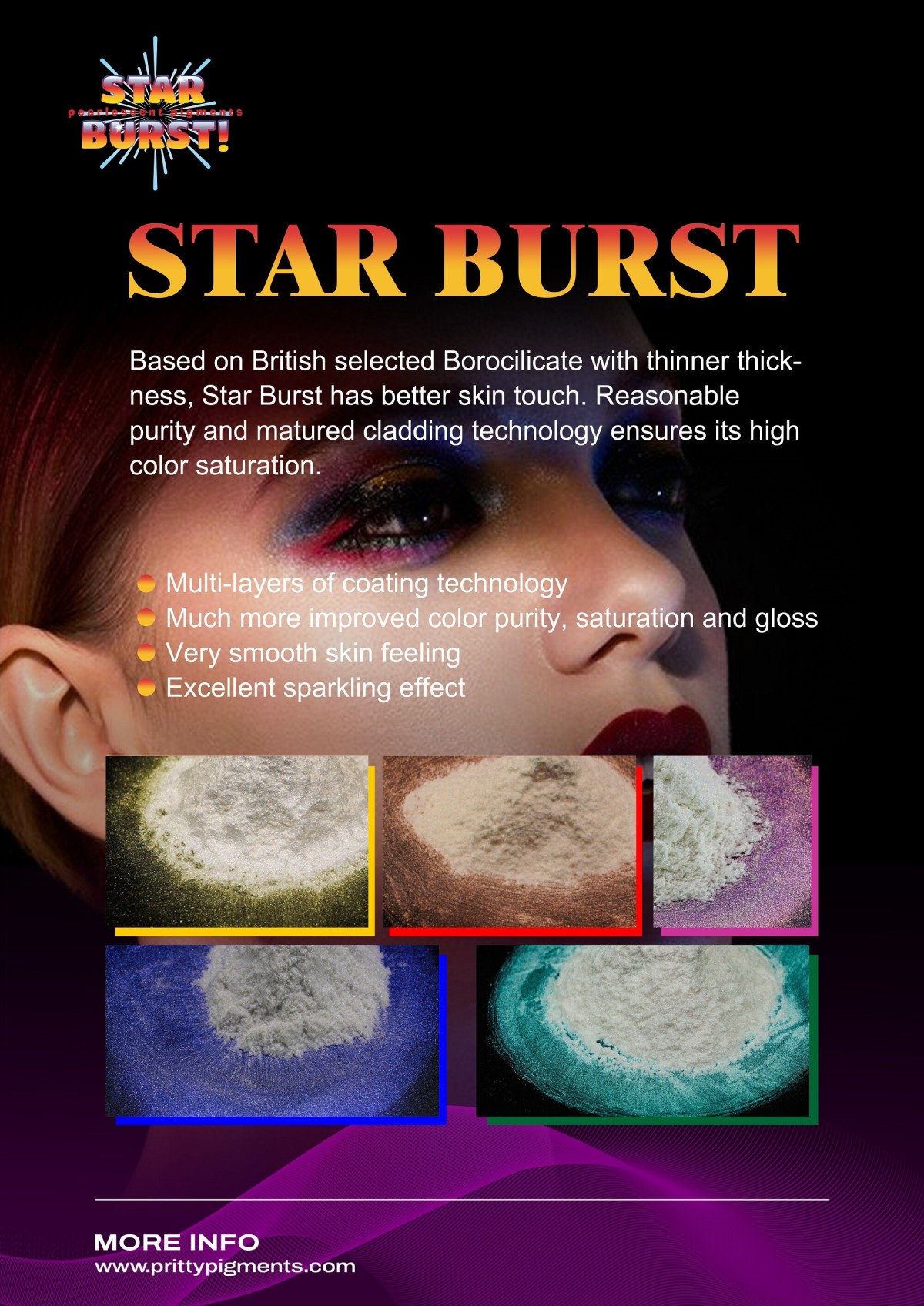According to the latest report from Cosmetics Business, the global pearlescent pigment market is projected to exceed $2.7 billion by 2025, with cosmetic applications accounting for over 42%. As a leading global supplier of pearlescent pigments for cosmetics, we combine data from Intertek laboratories with global regulatory trends to decode the core developments and technological advancements for the upcoming seasons.
I. 2025 Autumn/Winter Color Trends: How Pearlescent Pigments Define "Luxury"
1. The Warm-Toned Metal Revolution
Pantone®’s 2025 Autumn/Winter forecast highlights "Caramel Bronze" and "Dusk Violet" as the dominant color families. Cosmetic pearlescent pigments achieve these effects through:
Multilayer Coating Technology: 5-8 alternating layers of TiO₂/Fe₂O₃ create dynamic shifts from golden brown to burgundy.
Particle Size Grading: A blend of 10-50μm particles replicates the natural luster of leather.
2. Sustainable Pearlescent Innovations
A survey by Cosmetics Europe reveals that 73% of consumers prefer eco-friendly makeup products. Key advancements include:
Bio-Based Mica Alternatives: Cellulose nanocrystals (CNC) as a base material reduce carbon footprint by 40%.
Heavy Metal-Free Formulas: Certified under ISO 16128-1 for natural origin, with cadmium/lead content <1ppm.
II. Global Regulatory Landscape for Cosmetic Pearlescent Pigments
1. Key Compliance Requirements
2. Supplier Compliance Practices
Top-tier global suppliers of pearlescent pigments for cosmetics implement a three-tier assurance system:
Raw Material Traceability: Blockchain-tracked mica sourcing (e.g., compliant mines in Jharkhand, India).
Toxicological Profiles (TPS): Full REACH documentation and skin irritation test reports.
Customized Compliance Solutions: Tailored for regions like the Middle East (GSO standards) and ASEAN (ACCSQ guidelines).
III. 4 Scientific Criteria for Selecting a Global Supplier
1. Technical Suitability
Makeup Applications: Recommended particle size 30-60μm, refractive index ≥2.8 (ASTM D523).
Skincare Applications: Nanoparticles (≤100nm) require dermal absorption safety data.
2. Production Capacity
Leading suppliers offer:
Dual-Source Material Backup: Ensures stable mica/synthetic substrate supply.
Flexible Production Lines: Scalable from 1kg samples to 20-ton batches.
3. Certification Completeness
Basic Certifications: ISO 22716 (Cosmetic GMP), RSPO (sustainable palm oil).
Advanced Certifications: Vegan Society, Halal/Kosher compliance.
4. Innovation Collaboration
Case Study: A French luxury brand reduced R&D cycles from 18 to 6 weeks using a supplier’s Color Matching System (CMS).
IV. Future Outlook: Ethical Aesthetics Driven by Technology
The International Federation of Societies of Cosmetic Chemists (IFSCC) highlights 2026 innovations:
Smart-Response Pigments: Adjust gloss based on humidity/temperature (patent pending).
3D-Printable Formulations: Enable 0.01mm precision for microstructures.
Biodegradable Dispersions: >90% degradation rate in water-based systems.
Conclusion
As a global supplier of pearlescent pigments, PRITTY is committed to advancing high-saturation colors and brilliant shimmer effects—qualities highly prized in cosmetics. We prioritize strict quality control, particularly in heavy metal content, to ensure eco-friendly and safe cosmetic materials.
If you’re exploring innovative colors or styles in cosmetics, try our newly developed StarBurst™ series—a breakthrough designed to inspire creativity.
Call to Action:
Request a free sample of StarBurst.
Download our 2025 Cosmetic Trend Technical Whitepaper.
Contact our team for customized pigment solutions.

By clicking 'Allow All', you agree to the storage of cookies on your device to enhance site navigation, analyze site usage and assist with our marketing efforts.